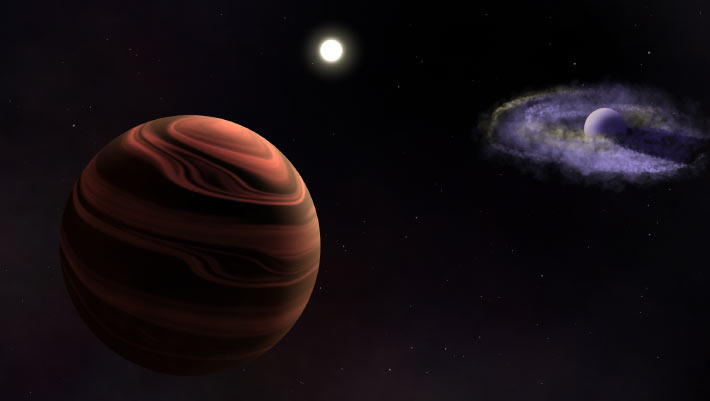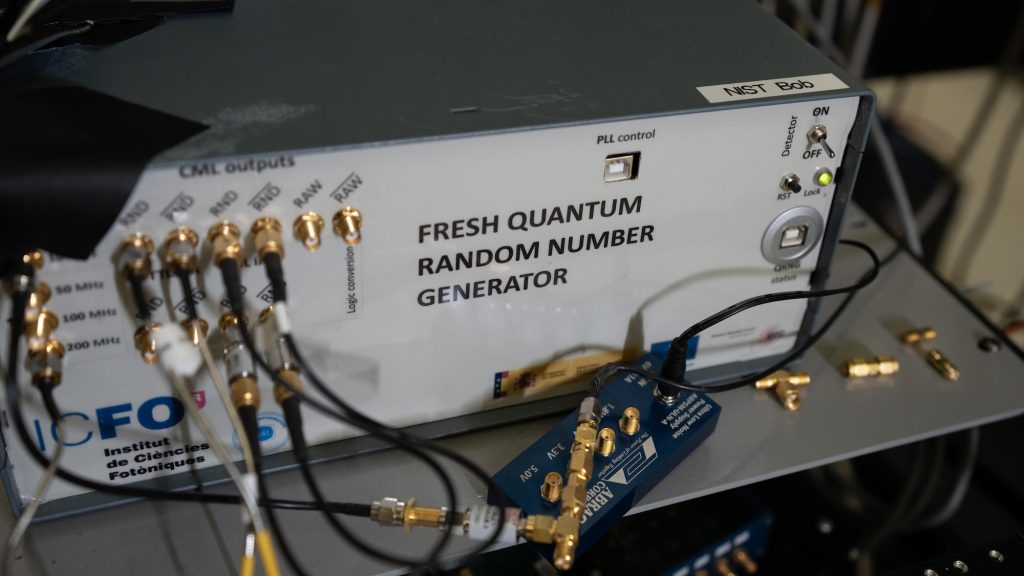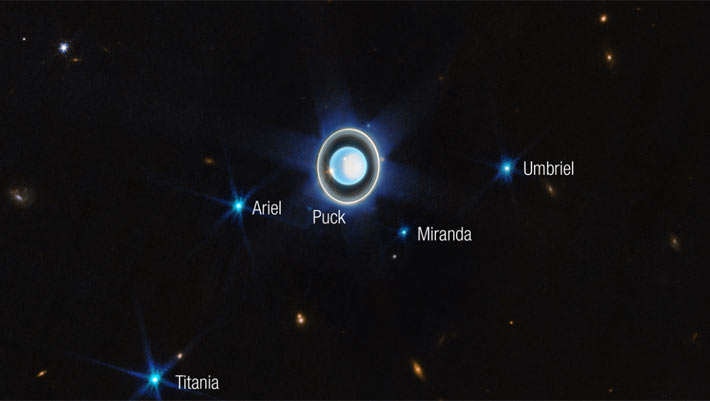Astronomers using the NASA/ESA/CSA James Webb Space Telescope have detected silicate clouds in the atmosphere of the exoplanet YSES-1c and a circumplanetary disk around its sibling planet, YSES-1b.
An artist’s rendition of the YSES-1 system consisting of the Sun-like star in the center, YSES-1b and its dusty circumplanetary disk (right), and YSES-1c with silicate clouds in its atmosphere (left). Image credit: Ellis Bogat.
YSES-1 is a solar-type star located approximately 309 light-years away in the constellation of Musca.
Also known as TYC 8998-760-1 or 2MASS J13251211-6456207, the star is about the same mass as our Sun, but is only 16.7 million years old.
It hosts two planets, YSES-1b and YSES-1c, at least 14 and 6 times more massive than Jupiter.
They orbit their parent star at distances of 160 and 320 AU; this places the alien worlds much further away from their star than Jupiter or Saturn are from the Sun.
YSES-1b and c are redder than other exoplanets (or brown dwarfs), suggesting that they may have distinct atmospheric properties.
The system was observed with several telescopes before Webb; however, detailed observations of this system were not possible prior to the Webb program.
“Directly imaged exoplanets are the only exoplanets that we can truly take photos of,” said Dr. Evert Nasedkin, a postdoctoral researcher at Trinity College Dublin.
“These exoplanets are typically still young enough that they are still hot from their formation and it is this warmth, seen in the thermal infrared, that we as astronomers observe.”
Using Webb’s spectroscopic instruments, Dr. Nasedkin and colleagues obtained broad spectra of YSES-1b and YSES-1c planets.
These include the first direct observations of silicate clouds in the atmosphere of YSES-1c, confirming previous theories about the composition of its atmosphere.
These silicate clouds are likely to contain iron, which may rain back down onto the planet.
The astronomers estimate that the cloud particles are 0.1 μm or smaller.
“When we looked at the smaller, farther-out companion, known as YSES 1-c, we found the tell-tale signature of silicate clouds in the mid-infrared,” Dr. Nasedkin said.
“Essentially made of sand-like particles, this is the strongest silicate absorption feature observed in an exoplanet yet.”
“We believe this is linked to the relative youth of the planets: younger planets are slightly larger in radius, and this extended atmosphere may allow the cloud to absorb more of the light emitted by the planet.”
“Using detailed modelling, we were able to identify the chemical composition of these clouds, as well as details about the shapes and sizes of the cloud particles.”
The authors also detected a silicate disk around YSES-1b — a rare observation for substellar companion exoplanets.
This observation indicates that YSES-1b may be a relatively newly-formed planet.
The findings offer new insights into early phases of exoplanet formation and atmosphere evolution.
“The YSES-1 system planets are also too widely separated to be explained through current formation theories, so the additional discoveries of distinct silicate clouds around YSES-1c and small hot dusty material around YSES-1b lead to more mysteries and complexities for determining how planets form and evolve,” said Dr. Kielan Hoch, an astronomer at the Space Telescope Science Institute.
The team’s results appear this week in the journal Nature.
_____
K.K.W. Hoch et al. Silicate clouds and a circumplanetary disk in the YSES-1 exoplanet system. Nature, published online June 10, 2025; doi: 10.1038/s41586-025-09174-w

























